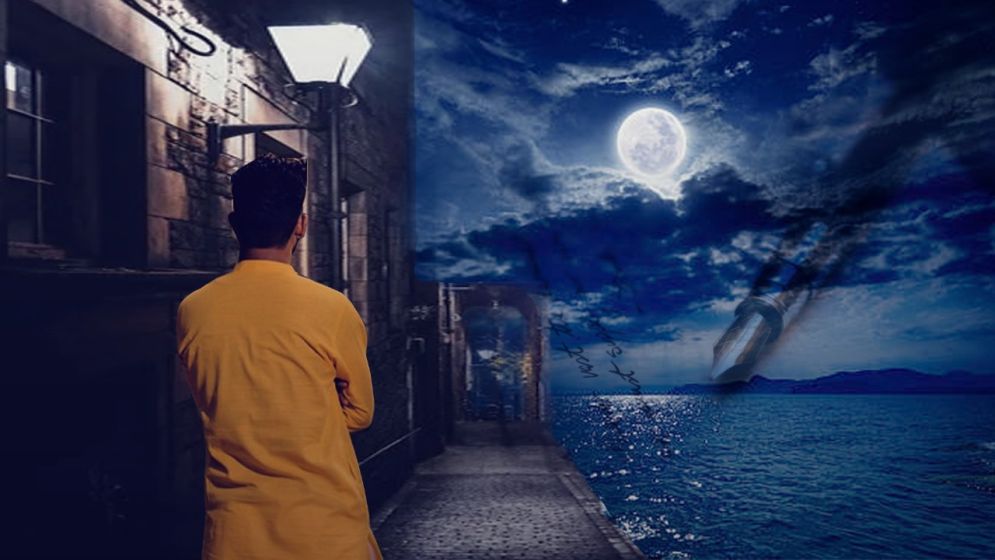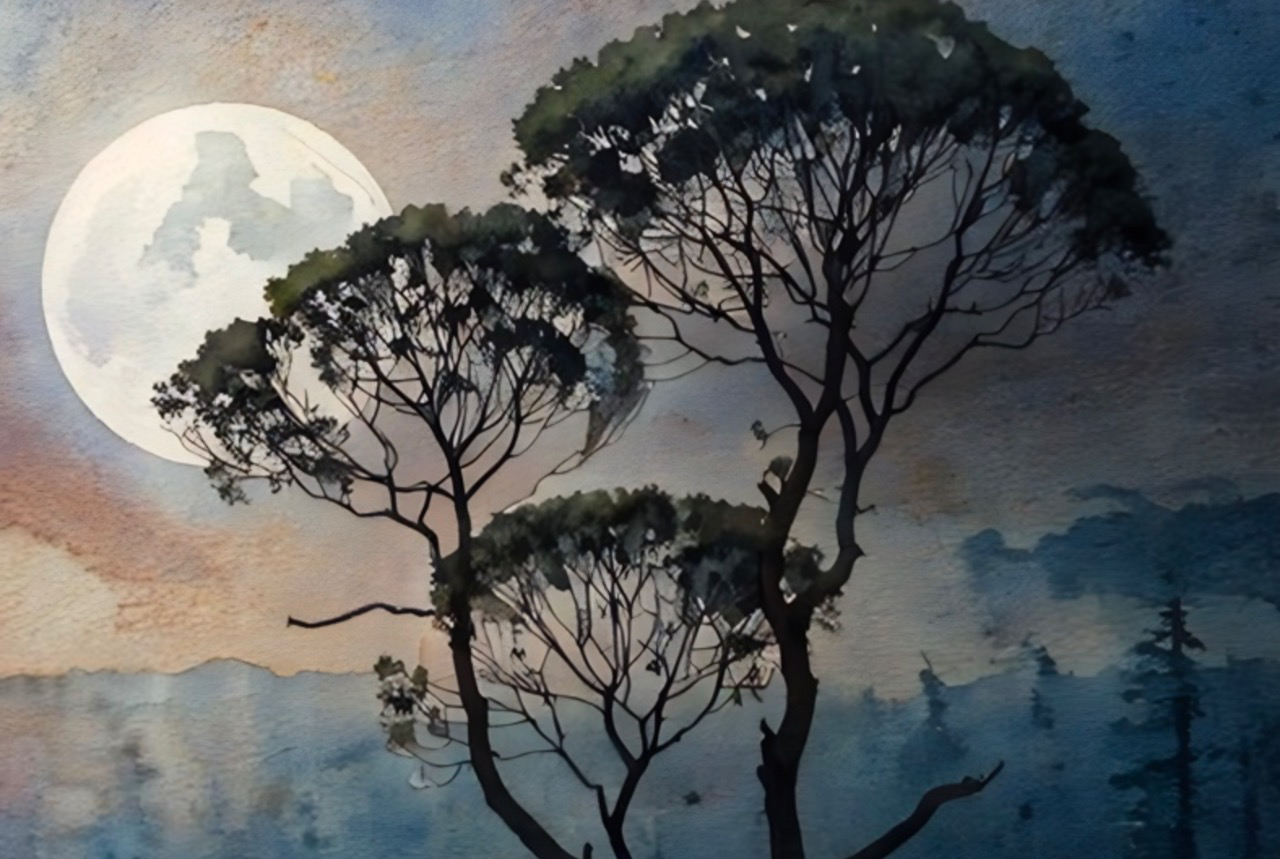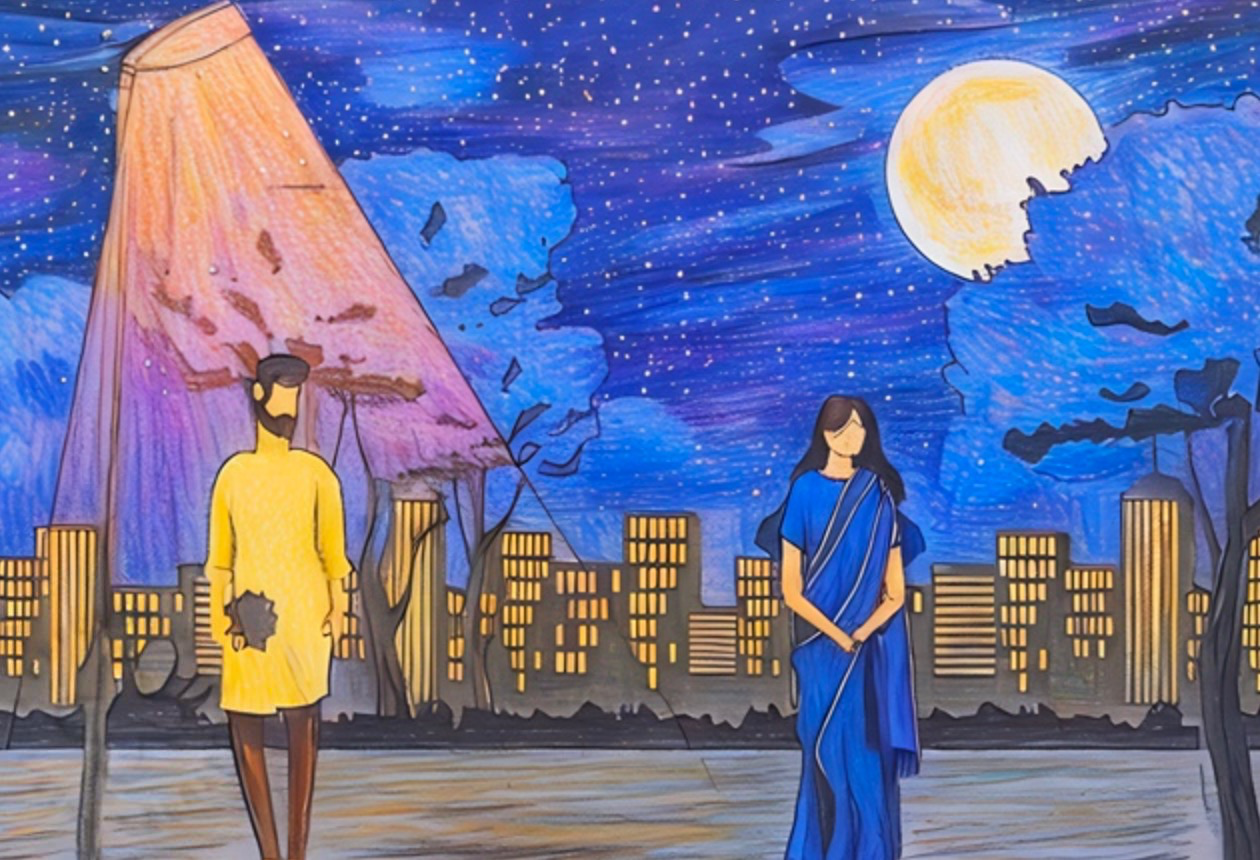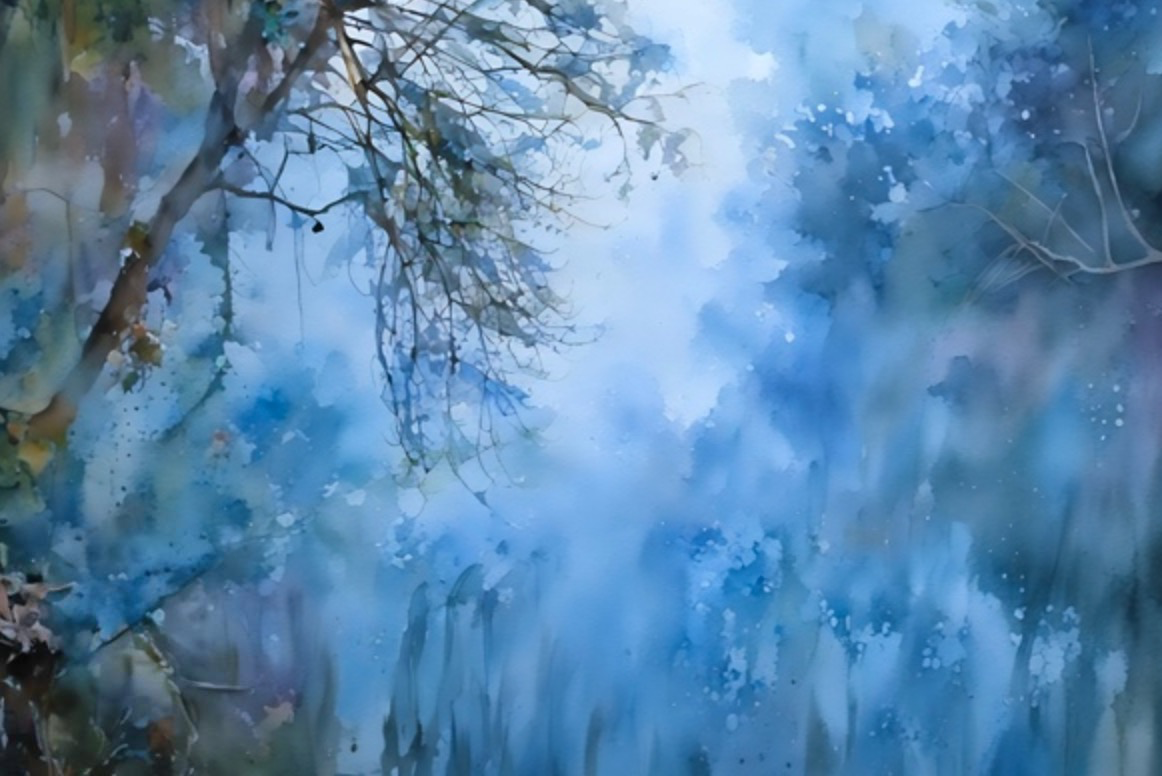Have we truly tried to see beneath the layers of Humayun Ahmed’s most iconic character “Himu”?

For some reason, it seems that Himu, one of Humayun Ahmed’s most iconic characters, remains one of his most misunderstood.
We haven’t truly understood Himu. We’ve failed to grasp his essence, and perhaps the greatest tragedy of all is that we haven’t even fully “read” what Himu really entails through the different layers with which Humayun Ahmed portrayed him.
Yes, the character we think we know—barefoot on the streets, draped in a yellow punjabi, wandering without a home or a destination—appears simple enough on the surface.
He says strange things, he does quirky things, but there’s a depth to him that remains largely unexplored.
Humayun's conception of Himu is rooted in Subodh Ghosh's “Shuno Barnari,” though the two characters differ in profound ways.
Humayun created a figure who, seemingly adrift, lives without ties—no family, no set path, no anchor. Yet beneath this wandering exterior lies a complexity we’ve largely overlooked.
In Himu and Harvard Ph.D. Boltubhai, Himu is seen trapping a man, Parimal, with nothing but words—no physical force, just a casual, almost surreal, act of manipulation.
This moment, while it might seem supernatural, isn’t without explanation. And yet, we gloss over the more profound questions that arise: Why does Himu walk? Why does he roam the streets, muttering to himself, with the sun beating down on his head? Has he truly freed himself from the world’s illusions? Does he cry? Does he ever weep?
The truth is, Himu would have remained a lighthearted character if not for his painful childhood. The readers, though, resists acknowledging that Himu has a darker side.
In nearly every book, Humayun offers glimpses into Himu’s troubled past—hints of a childhood fraught with fear and confusion—that point to a much deeper emotional landscape.
Yet, readers typically avoid confronting these complexities. As a result, Himu has been reduced to little more than a quirky, humorous figure—a mere source of entertainment, a colorless figure draped in yellow, without much depth.
But Himu is not just the eccentric wanderer we see on the surface. His father, a man plagued by his own delusions, thought that with enough training, one could become a Mohapurush (a great man), just like the way one could become a doctor, or an engineer.
For him, Himu was little more than an experiment—his one and only experiment in life.
Though their time together was brief, Himu’s father subjected him to a harrowing childhood. And from the fragments of this past that Humayun reveals throughout his novels, we begin to understand the true horror of Himu’s early years—events that haunt him long after they’ve passed.

The tragic roots of Himu
When Himu was a child, his father bought him a parrot. Overjoyed, Himu spent all his time with the bird, caring for it, loving it, and teaching it to speak.
But the day the bird spoke, his father strangled it to death. This wasn’t an isolated incident—his father would buy Himu toys, only to destroy them as soon as Himu began playing, teaching him the lesson that attachment was to be avoided.
Love, he said, shouldn’t belong to any single entity; it should be universal. You must love all the birds in the world, all the people, not just one.
Himu never knew his mother. She passed away shortly after his birth, and his father erased all traces of her from their life, destroying her photographs.
There was only one photograph left, sealed inside an envelope hidden beneath his father’s mattress, along with her diary.
But there was a condition: Himu could only open it when his heart was truly filled with joy. And once opened, he was to burn the contents—photo, diary, and envelope—in a fire.
His father knew Himu would never have the courage to open the envelope, even when his heart was full of joy, out of fear of never seeing the photo again.
For a boy who lost his mother at birth, the cruelty of this act is beyond measure.
In the final parts of the book Himu, I begin to wonder if his mother didn’t die at birth after all. Perhaps it was some time later.
In a surreal moment near the end of the novel, Himu, having been bitten by a dog, enters a state between consciousness and unconsciousness.
He has a conversation with his father, who calls him “Khoka” (a term for a young boy), a name Himu’s mother used to call him.
This conversation is imaginary, a fragment of Himu’s subconscious mind, and yet it’s a clue.
How did Himu remember the name "Khoka," and why does he remember his mother’s face, dark skin, slightly uneven eyes, kajal-lined eyes, and beauty, when she was never there to raise him?
After his father's death, Himu finds no relatives on his father's side and is forced to turn to his mother's side of the family. This, too, was his father's wish.
He wanted his son to spend his childhood with his maternal uncles, people of a demonic nature. His father believed that only by living with evil could Himu ever understand the true value of goodness.
And indeed, his uncles were demons, as the books reveal through horrifying events—like the slaughtering of a pregnant cat and entrapping innocent villagers in death confessions.
These early experiences shaped Himu's relationships with bad people, making him more at ease with the morally corrupt.
But the darkest truth of all came when Himu realized the truth about his mother’s death. It wasn’t natural—she had been murdered by his father. His mother, he understood, had been the only thing standing between his father and his dream of raising a great man.
Though his father never admitted it directly, he dropped hints, telling Himu, “You need to figure out how your mother died. You need to become wise. What I did, I did for you.”
A cruel, devastating truth that would haunt
Himu for the rest of his life.
Himu's dual worlds: A life of regret
and unattainable dreams
Before his death, Himu’s father dreams of his wife, and in this dream, a pivotal moment occurs.
For the first time, he realizes the immense pain his son will endure from the loss of his mother. In this fleeting moment of self-awareness, he feels the weight of his responsibility in causing that pain.
His mother, in the dream, asks him if Himu has ever had a girlfriend or held a woman’s hand.
His father answers, “No, he is striving to become a great man. For that, contact with women is forbidden.”
In response, his mother wipes away her tears, furious: “He is not striving; he is wasting time. Bring him to me. I will slap him and rid him of this ‘great man’ delusion.”
This dream unveils a deep, unspoken regret in Himu's father. Although he never consciously admitted it, somewhere within him, he must have felt the internal torment of knowing that Himu’s life could have been different—one untainted by the weight of his father’s ambitions.
Himu’s first novel wasn’t actually called Himu, but Mayurakshi (Peacock's Feather), a name he first imagined in sixth grade, though he didn’t know whether such a river existed.
A teacher had told him, "If there isn’t a river by this name, then it doesn’t exist. This is your river." Three years later, Himu dreams of this river.
The river is described as small, with clear water and sand visible beneath the surface. Along its banks, the grass is lush and green, and a large pakur tree stands on the opposite shore. From that tree, a dove’s cry fills the air, laden with sorrow. A girl in a green-striped sari walks along the river, sprinkling water.
Reading Mayurakshi presents a challenge: the river is not just a river. It represents Himu’s world—the world he could never live, the path he couldn’t walk, the life he couldn’t have.
The river is more than water—it embodies Himu’s deepest, hidden sorrow. The dove’s cry is not just a sound, but Himu’s own silent grief. The girl in the sari, whose identity remains obscure, is a figure Himu both knows and doesn’t know—a connection from many past lives.
By the end of Mayurakshi, the identity of this woman is revealed: she is Himu’s mother, whom his father had killed.
In essence, Himu’s imaginary Mayurakshi is drenched in sadness and loss. When Himu opens his eyes, he is forced to retreat into a world where he remains detached from everything around him.
The people, events, and things are just background noise to his still, stony existence—a life his father shaped for him.
Mayurakshi, on the other hand, is Himu's own creation, a world hidden away from his father's harsh reality, where he can feel sorrow freely, and be caught in the web of love.
Yet, neither world is truly livable for him. Both are filled with an overwhelming emptiness—sadness that lingers, paths that remain dry, and riverbanks that never dry completely.

The unresolved legacy of Himu's
father
The question of whether Himu's father was successful or not remains unclear, much like the character of Himu himself.
In Ebong Himu (...And Himu…), when Himu leaves Badarul Sahib in the ICU, Ira asks, "Aren’t you going to stay by your friend’s side?" Himu responds simply, "No." When Ira asks, "If I ask you to hold my hand, will you get angry?" Himu replies, "I won’t get angry. But Ira, I won’t hold your hand. Himus never hold anyone’s hand."
Himu, in his introspective calmness, can dive deeply into his thoughts and resurface just as quietly, without excitement or attachment.
His unique ability to detach from emotion is unmatched. As I read, I sometimes wonder if Himu’s father wasn’t entirely unsuccessful.
But in Aaj Himur Bie (Today is Himu’s Marriage), when his aunt lovingly applies raw turmeric paste to Himu’s body and bathes him while scolding him, Himu unexpectedly tears up. His aunt is shocked, as am I.
Their exchange goes:
“Why are you crying? Why are there tears in your eyes?”
“It’s because I failed in ‘Great Man Training.’”
“Don’t speak in riddles. What’s the problem?”
“Your affection is the problem. No one has ever touched me with so much affection and love.”
From this moment, it seems Himu's father may not have fully succeeded in shaping the man he hoped to create.
In Himur Hate Koekti Nilpoddo (Himu’s Handful of Blue Lotuses), a chillingly cruel scene highlights both sides of this narrative.
For those who’ve carefully followed Himu’s journey, it’s clear that, out of the many women across the twenty-one novels, the one who most profoundly influenced Himu’s life path, who stood as a barrier or caused him deep regret over a directionless journey, was not Rupa. It was Maria.
For those new to Himu, I often recommend reading Himu’s Handful of Blue Lotuses after Mayurakshi. Near the novel’s end, Himu says goodbye to Maria.
She stands still, and Himu reflects: "For a few moments, I experienced a kind of illusion. It felt like I didn’t need to walk anymore. Instead of striving to be a great man, I sat beside this affectionate young woman, a common man, and gave her the blue lotuses I had started my life with."
In that quiet, defining moment, Himu finally begins to imagine another kind of life—one without ambition or detachment.

An enigmatic figure lost between
indifference and connection
Himu could never fully detach himself from the world around him, nor could he ever completely immerse himself in deep emotional connections.
He existed in a middle ground, a space where he wandered aimlessly, his exhaustion eventually driving him to pause and reflect. It’s in this space that Mayurakshi comes alive, sparking his imagination.
He dips his feet into cold water, sits quietly, and lets his eyes moisten with unspoken emotions.
In this ambiguous realm, Himu makes curious decisions. He slaps a rickshaw-puller when he should save him. He strokes a street child’s head with tenderness. He fulfills a child’s wish by renting an elephant. He transforms a bad person with ease and purifies deep sin with rain.
Himu’s power to create illusions, to shift between actions and inactions, stems from his existence in this intermediate space. It is this complexity that defines him—Himu is far from simple.
His character was never meant for ninth or tenth graders; he was never meant to be understood so easily. Though Humayun’s writing is accessible, Himu might be simple to read but impossible to fully grasp.
Our generation consumes Himu’s story—his walks, his yellow attire, his deep, unfulfilled love for Rupa, his intuition, and humor.
But what we fail to truly grasp is the river. Mayurakshi. The river Himu could never cross.
There were paths and people, yes, but the sorrowful woman in the green-striped sari who walked by the riverbank, the woman whose loving hands never touched his hair, whose lips never kissed his weary forehead—she was never seen by him.
And so, every woman’s face becomes a reflection of hers. Every woman’s touch is a shadow of her hand. Every kiss is her kiss.
For Himu, it is only possible to leave. If he had stayed, his death would have been meaningless, and he could never bear that burden.
On the road he walks, there is no cornice on the rooftops. Rupa, in her blue sari, never stands waiting for him at the edge of that cornice.
Himu is forbidden to visit that place. Like Mayurakshi, Himu remains elusive—his true nature hidden, unclear, and enigmatic.
—
Shakhawat Hossen is a writer
(Translated from Bangla by Faisal Mahmud)

